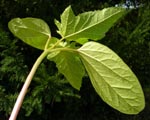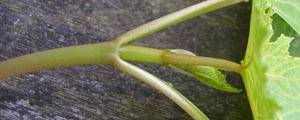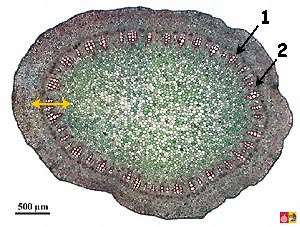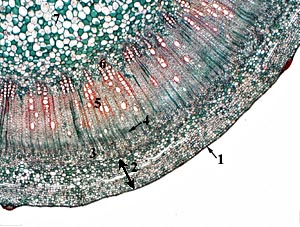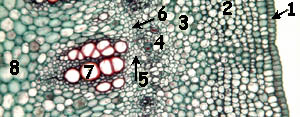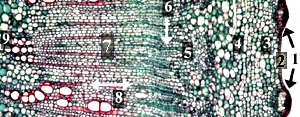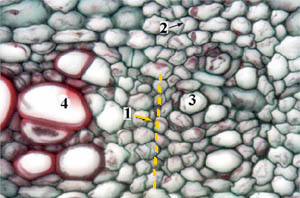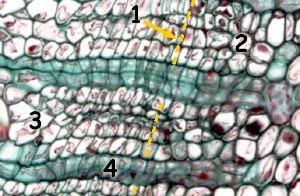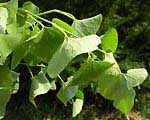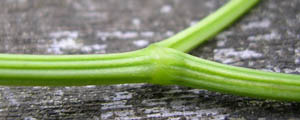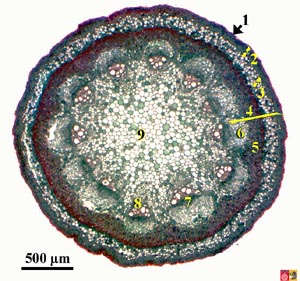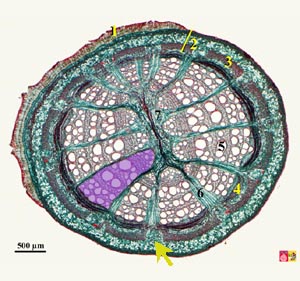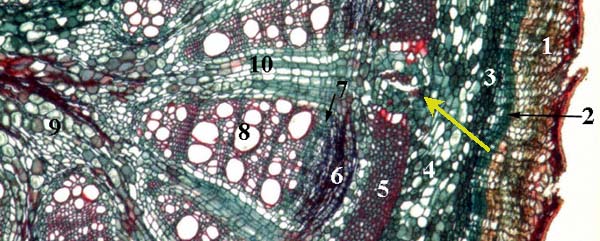(Inter)fascicular cambium |
||||||
Ring-shaped secondary cambium: type castor bean
In some dicots, like in castor bean, at the end of primary growth fascicular cambium (within the vascular bundles) and interfascicular cambium (cambium between the vascular bundles) develop into an annular cambium. These divisions occur in parallel to the axis of the stem. Occasionally also a few radial divisions occur to compensate for the increase in perimeter of the cambium. All cells and tissues that arise from this new cambium belong to secondary tissues. This annular cambium forms a ring secondary phloem toward the cortex and secondary xylem inward (collateral vascular bundle; yellow arrow) spaced with fine arrays of parenchyma. Dilatation tissue between secondary vascular tissue: type Aristolochia
In dicots of the "Aristolochia" type, fascicular cambium is formed within each vascular bundle FROM REMNANTS OF PROCAMBIUM, which produces new, secondary xylem and phloem. To the inside bands of xylem are formed (one such band of secondary xylem is indicated in the figure as a purple overlay) that show growth rings (annual rings). The largest vessels are formed in spring, when the plant requires much water for growth. The vessels made during summer are much smaller. The secondary phloem is less extended. Amid the area's of secondary vascular tissue, interfascicular cambium generates broad rays of parenchymatic tissue. These rays form radial separations (septae) along the length of the stem and they connect pith and cortex together. Since the bands of xylem and phloem are intercalated with parenchyma tissue, the vine plant-like stem of Dutchman's pipe beholds some flexibility. In the cortex parenchyma cells differentiate to sclerenchyma (a type of supportive tissue). Parenchymatic cells laying a prolongation of the pith rays have undergone radial divisions. As a consequence the cortical region becomes filled up with cones of parenchymatic tissue, called dilation tissue, which separate the sclerenchymatic tissue into clusters (yellow arrows. See another example of dilatation tissue in linden). In the outer part of the stem a new (secondary) cambium develops, namely cork cambium (= phellogen) that forms parenchyma (=phelloderm) toward the inside and cork (= phellem) to the outside. These two layers, phelloderm and phellem, together are called periderm. The next pages present more data on cork formation in castor bean and elderberry.
|
||||||
